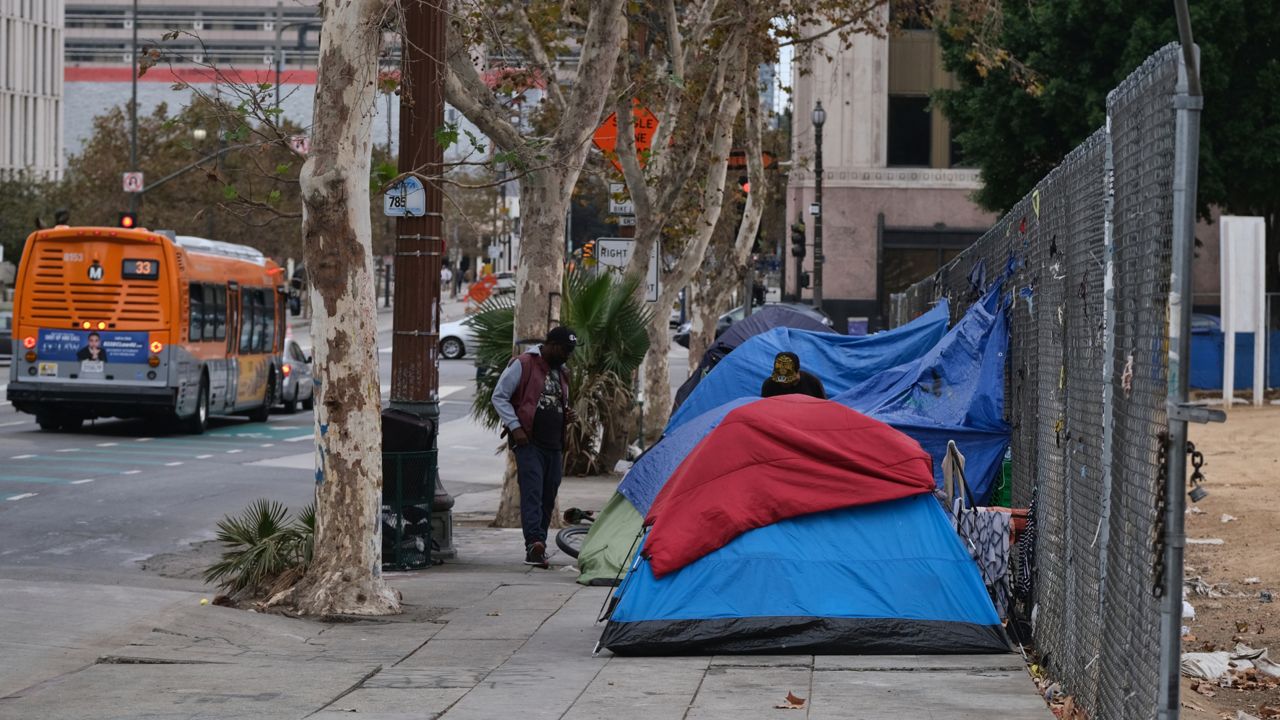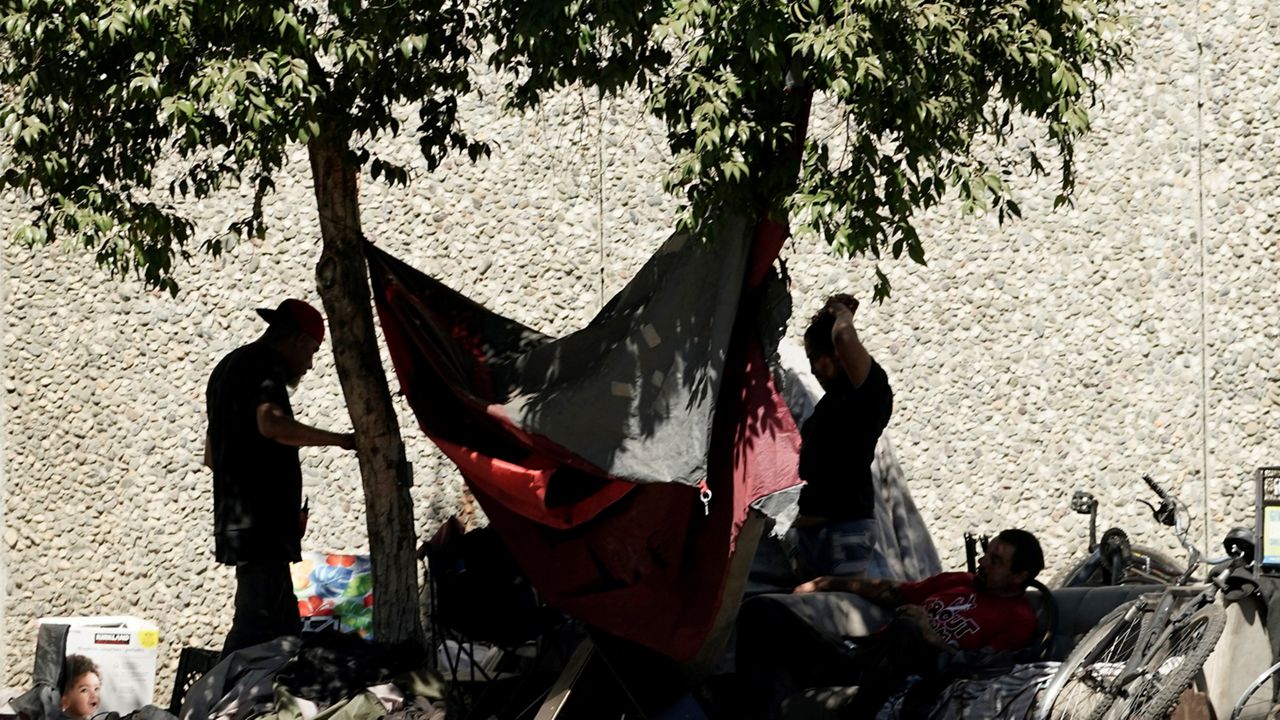LOS ANGELES — Each weekend, you can find Maria Briones setting up shop on a sidewalk outside Saint Cecilia church in Los Angeles.
“Every Sunday for the past 20 years, I have been here,” she said.
Related Stories
- City of LA's eviction moratorium ended Jan. 31, but the County of LA extended its eviction moratorium through the end of March 2023
- Roughly 226,000 LA County households are behind on rent, according to the National Equity Atlas, and to help stem a wave of evictions, LA City recently adopted a series of tenant protections
- Low-income seniors are still at high-risk of homelessness, despite tenant protections and extended eviction moratoriums
- California has seen a 131% spike in older adult homelessness between 2017 and 2021 according to nonprofit Justice in aging
Briones is a street vendor who started off selling rosaries and expanded to handmade items, prayer books and bibles. During the week, the 67-year-old collects recyclables for money, extra jobs, anything to survive.
“When you’re in my position, you can’t work physically like other people do. You have to learn ways to overcome those limitations,” she said.
Briones, who is disabled and moves around in a wheelchair, shares a bedroom with her brother, but given her tight budget, she worries about making her $525 monthly rent, a stress she said other low-income seniors also face.
“They’re struggling either to eat or pay the rent and so if we were able to find affordable housing for us, we would not be struggling and facing the subject of being out on the street,” she said.
Briones said she fell behind on rent last year when she got COVID-19 for several months and her landlord tried to evict her. She’s protected by the City of Los Angeles’ eviction moratorium, but that ended on Jan. 31.
However, the County of LA extended its eviction moratorium through the end of March 2023.
Roughly 226,000 LA County households are behind on rent, according to the National Equity Atlas. To help stem a wave of evictions, LA City recently adopted a series of tenant protections, but Briones and other low-income seniors are still at higher risk of ending up on the streets according to Patti Prunhuber with the nonprofit, Justice in Aging.
“They are living on fixed incomes, and they are hit especially hard by the rapidly increasing rents that aren’t keeping pace with those incomes and they can’t just work harder to make ends meet,” she said.
She said California has seen a 131% spike in older adult homelessness between 2017 and 2021 and part of that is because of surging rents. In 2022, the average monthly rent was $359 more than in 2019 across the U.S. based on data from Redfin.
“We have to make sure that federal and state policymakers are both building more affordable housing but at the same time, creating and expanding investments in programs that focus on homeless prevention,” she said. “By helping people afford their rent, by helping them get modifications to their housing so they can stay in their homes and by making sure services are brought in as needed.”
Briones said she recently got connected to a caseworker at St. Johns Community Health, getting medical and housing assistance, services she didn’t even know existed.
“I am one person who does not give up easily and I would try to do the best to not be a burden to anybody,” she said.












